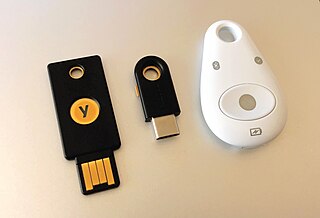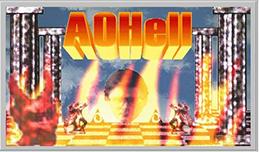
Warez is a common computing and broader cultural term referring to pirated software that is distributed via the Internet. Warez is used most commonly as a noun, a plural form of ware, and is intended to be pronounced like the word wares. The circumvention of copy protection (cracking) is an essential step in generating warez, and based on this common mechanism, the software-focused definition has been extended to include other copyright-protected materials, including movies and games. The global array of warez groups has been referred to as "The Scene", deriving from its earlier description as "the warez scene". Distribution and trade of copyrighted works without payment of fees or royalties generally violates national and international copyright laws and agreements. The term warez covers supported as well as unsupported (abandonware) items, and legal prohibitions governing creation and distribution of warez cover both profit-driven and "enthusiast" generators and distributors of such items.
Various anti-spam techniques are used to prevent email spam.

Phishing is a form of social engineering and a scam where attackers deceive people into revealing sensitive information or installing malware such as viruses, worms, adware, or ransomware. Phishing attacks have become increasingly sophisticated and often transparently mirror the site being targeted, allowing the attacker to observe everything while the victim navigates the site, and transverses any additional security boundaries with the victim. As of 2020, it is the most common type of cybercrime, with the FBI's Internet Crime Complaint Center reporting more incidents of phishing than any other type of computer crime.
Internet security is a branch of computer security. It encompasses the Internet, browser security, web site security, and network security as it applies to other applications or operating systems as a whole. Its objective is to establish rules and measures to use against attacks over the Internet. The Internet is an inherently insecure channel for information exchange, with high risk of intrusion or fraud, such as phishing, online viruses, trojans, ransomware and worms.
Email fraud is intentional deception for either personal gain or to damage another individual using email as the vehicle. Almost as soon as email became widely used, it began to be used as a means to defraud people, just as telephony and paper mail were used by previous generations.
A transaction authentication number (TAN) is used by some online banking services as a form of single use one-time passwords (OTPs) to authorize financial transactions. TANs are a second layer of security above and beyond the traditional single-password authentication.
A spoofed URL involves one website masquerading as another, often leveraging vulnerabilities in web browser technology to facilitate a malicious computer attack. These attacks are particularly effective against computers that lack up-to- security patches. Alternatively, some spoofed URLs are crafted for satirical purposes.
A password manager is a computer program that allows users to store and manage their passwords for local applications or online services such as web applications, online shops or social media. A web browser generally has a built in version of a password manager. These have been criticized frequently as many have stored the passwords in plaintext, allowing hacking attempts.

In computing, a private message, personal message, or direct message refers to a private communication sent or received by a user of a private communication channel on any given platform. Unlike public posts, PMs are only viewable by the participants. Though long a function present on IRCs and Internet forums, private channels for PMs have recently grown in popularity due to the increasing demand for privacy and private collaboration on social media.
Voice phishing, or vishing, is the use of telephony to conduct phishing attacks.
Internet safety, also known as online safety, cyber safety and electronic safety (e-safety), refers to the policies, practices and processes that reduce the harms to people that are enabled by the (mis)use of information technology.

An evil twin is a fraudulent Wi-Fi access point that appears to be legitimate but is set up to eavesdrop on wireless communications. The evil twin is the wireless LAN equivalent of the phishing scam.
Torpig, also known as Anserin or Sinowal is a type of botnet spread through systems compromised by the Mebroot rootkit by a variety of trojan horses for the purpose of collecting sensitive personal and corporate data such as bank account and credit card information. It targets computers that use Microsoft Windows, recruiting a network of zombies for the botnet. Torpig circumvents antivirus software through the use of rootkit technology and scans the infected system for credentials, accounts and passwords as well as potentially allowing attackers full access to the computer. It is also purportedly capable of modifying data on the computer, and can perform man-in-the-browser attacks.
Internet fraud prevention is the act of stopping various types of internet fraud. Due to the many different ways of committing fraud over the Internet, such as stolen credit cards, identity theft, phishing, and chargebacks, users of the Internet, including online merchants, financial institutions and consumers who make online purchases, must make sure to avoid or minimize the risk of falling prey to such scams.

Credit card fraud is an inclusive term for fraud committed using a payment card, such as a credit card or debit card. The purpose may be to obtain goods or services or to make payment to another account, which is controlled by a criminal. The Payment Card Industry Data Security Standard is the data security standard created to help financial institutions process card payments securely and reduce card fraud.

Multi-factor authentication is an electronic authentication method in which a user is granted access to a website or application only after successfully presenting two or more pieces of evidence to an authentication mechanism. MFA protects personal data—which may include personal identification or financial assets—from being accessed by an unauthorized third party that may have been able to discover, for example, a single password.
Zeus is a Trojan horse malware package that runs on versions of Microsoft Windows. It is often used to steal banking information by man-in-the-browser keystroke logging and form grabbing. Zeus is spread mainly through drive-by downloads and phishing schemes. First identified in July 2007 when it was used to steal information from the United States Department of Transportation, it became more widespread in March 2009. In June 2009 security company Prevx discovered that Zeus had compromised over 74,000 FTP accounts on websites of such companies as the Bank of America, NASA, Monster.com, ABC, Oracle, Play.com, Cisco, Amazon, and BusinessWeek. Similarly to Koobface, Zeus has also been used to trick victims of technical support scams into giving the scam artists money through pop-up messages that claim the user has a virus, when in reality they might have no viruses at all. The scammers may use programs such as Command prompt or Event viewer to make the user believe that their computer is infected.
Social hacking describes the act of attempting to manipulate outcomes of social behaviour through orchestrated actions. The general function of social hacking is to gain access to restricted information or to a physical space without proper permission. Most often, social hacking attacks are achieved by impersonating an individual or group who is directly or indirectly known to the victims or by representing an individual or group in a position of authority. This is done through pre-meditated research and planning to gain victims’ confidence. Social hackers take great measures to present overtones of familiarity and trustworthiness to elicit confidential or personal information. Social hacking is most commonly associated as a component of “social engineering”.
Infostealers are a form of malicious software, a type of trojan, created to breach computer systems for the purpose of stealing information. They extract a range of data such as login details, session cookies, financial information, and personally identifiable information, and then transmit it to a remote server managed by cybercriminals. This data is often traded on illicit markets to other threat actors. While primarily used by cybercriminals for financial gain, infostealers can also be employed by state-sponsored actors for espionage purposes.






